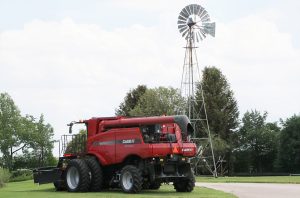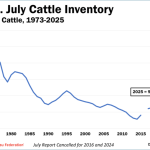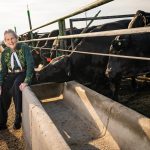CSU study: Wolf reintroduction ecosystem restoration claims may be overblown

A new study by Colorado State University researchers has found that the argument espoused by supporters of the reintroduction of wolves into Colorado that it would revive or bring balance to the ecosystem may not happen, at lease as quickly as some have hoped.
Here are just a few examples of comments from these wolf reintroduction proponents, starting with Erika Moore of the Colorado Wolf and Wildlife Center: “Bringing back wolves is hopefully going to have the same effect it did in Yellowstone where it actually revived the ecosystem. We do believe that wolves are necessary for the ecosystem. The ecosystems cannot support how many elk and deer we have, and over time we’re going to start to see a degradation of ecosystems due to that.”
Rob Edward, president of the Rocky Mountain Wolf Project: “Since the 1940s, when Colorado’s last wolf was killed, our ecosystem has suffered, knocked out of balance. Without wolves keeping them alert and moving around, elk and deer strip away vital streamside vegetation, leading to erosion and the disruption of habitat, threatening beavers, songbirds, and even native trout. This November, Coloradans can Restore the Howl by voting Yes on Prop 114.”
The CSU study was conducted over a 20-year period in Yellowstone National Park where wolves were reintroduced in the 1990s.
Colorado researchers found that “Claims of ecosystem restoration, resulting from a trophic cascade following the restoration of the gray wolf to Yellowstone, have been used to justify translocation of wolves to their unoccupied former range in many areas of the world,” the study states. “Careful scrutiny has revealed these claims to be exaggerated or false.”
Just to qualify, the researchers didn’t say that reintroducing wolves into Colorado is a bad idea, just that if people expect to see an improvement in Colorado’s ecosystem balance it won’t happen in the “near term.”
In its study, which was released on Wednesday, the researchers were trying to find out if willows, which were eaten by elk herds would return once the wolves were returned to the park and elk populations were kept in check.
“Hobbs and David Cooper, a research scientist emeritus in the Department of Forest and Rangeland Stewardship, created study plots in Yellowstone’s northern range that they observed over 20 years,” according to a story in the Denver Post. “Some plots were fenced in to keep the elk from browsing, and they included manmade beaver dams — meant to replicate the ecosystem before the eradication of carnivores.
“Others were left unfenced and undammed.
“If the ecosystem reverted back, willow growth should have been the same in both types of plots. But the willows in plots without fences and dams were three times shorter than those with both structures. The landscape in the study did not revert to its prior state.”
It remains to be seen how long it would take for an ecosystem to revert back to where it was when wolves roamed, or if at all, but the people who espouse this belief may want to read CSU’s study.







